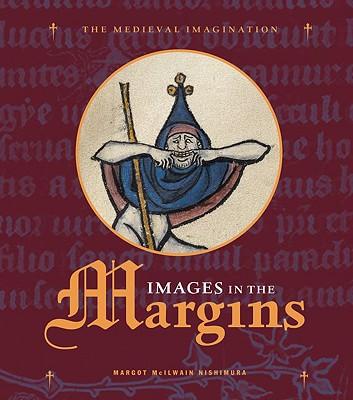
Images in the Margins by Margot Mcilwain Nishimura
This is a cute little book about the marginalia often shown in medieval manuscript. It talks about th history of marginalia and how it started in the large capital letters of earlier manuscripts.
Images in the Margins does a good job of detailing which manuscript in particular the images come form so it’s possible to look up digital copies of the text later. There’s also brief history notes alongside the marginalia, talking about the importance of hunting for instance alongside hunting marginalia.
Marginalia often serve as a good insight into the mindsets of the people copying the manuscript. It also often gives us clues into the more common aspects which aren’t always depicted in other places, such as the image of the swimmers.
[tabs] [tab title=”Publishers Blurb”] “Images in the Margins” is the third in the popular Medieval Imagination series of small, affordable books drawing on manuscript illumination in the collections of the J. Paul Getty Museum and the British Library. Each volume focuses on a particular theme and provides an accessible, delightful introduction to the imagination of the medieval world. An astonishing mix of mundane, playful, absurd, and monstrous beings are found in the borders of English, French, and Italian manuscripts from the Gothic era. Unpredictable, topical, often irreverent, like the “New Yorker” cartoons of today, marginalia images drawn in the margins of manuscripts were a source of satire, serious social observation, and amusement for medieval readers. Through enlarged, full-color details and a lively narrative, this volume brings these intimately scaled, fascinating images to a wider audience. [/tab] [/tabs]